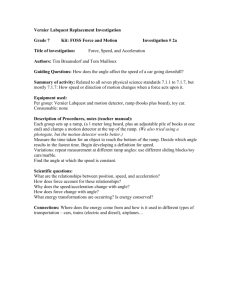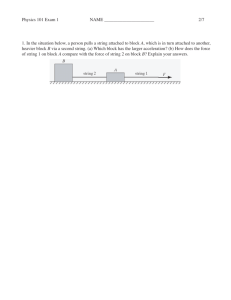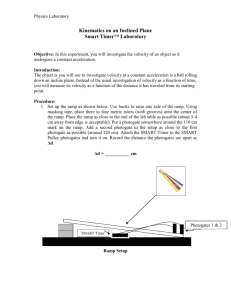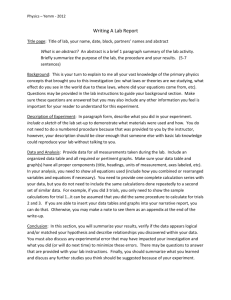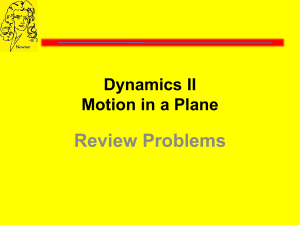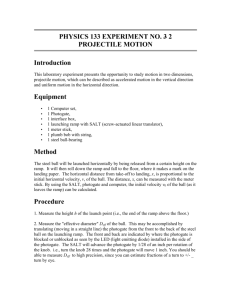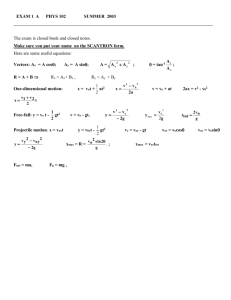Constant Force and Changing Mass (2)
advertisement
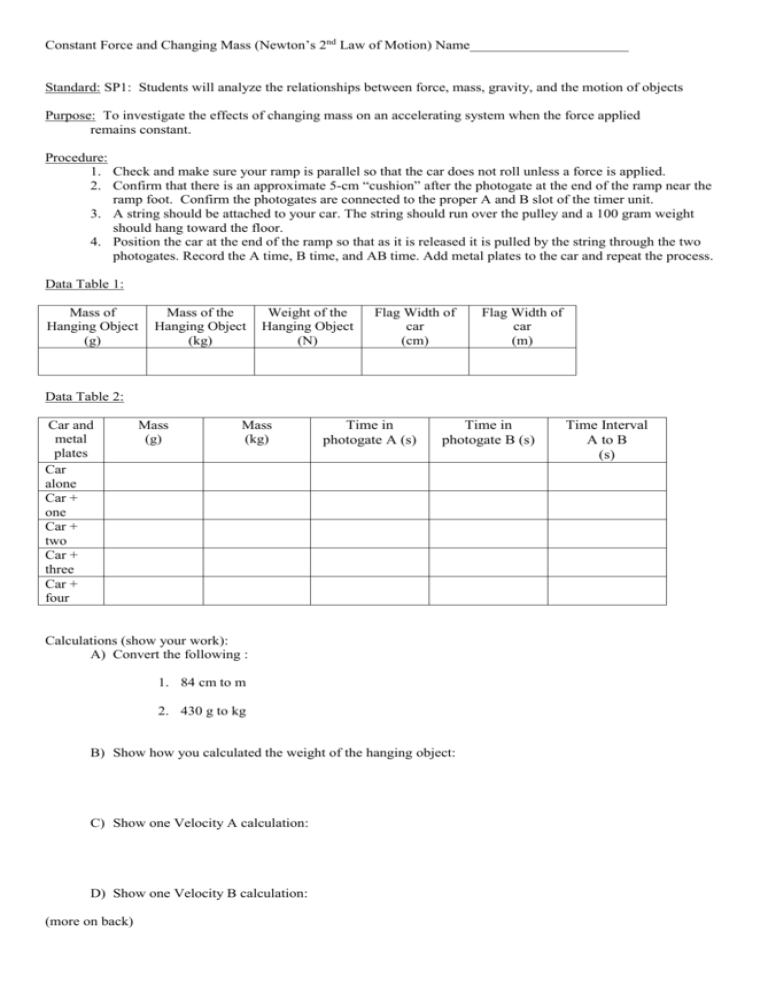
Constant Force and Changing Mass (Newton’s 2nd Law of Motion) Name______________________ Standard: SP1: Students will analyze the relationships between force, mass, gravity, and the motion of objects Purpose: To investigate the effects of changing mass on an accelerating system when the force applied remains constant. Procedure: 1. Check and make sure your ramp is parallel so that the car does not roll unless a force is applied. 2. Confirm that there is an approximate 5-cm “cushion” after the photogate at the end of the ramp near the ramp foot. Confirm the photogates are connected to the proper A and B slot of the timer unit. 3. A string should be attached to your car. The string should run over the pulley and a 100 gram weight should hang toward the floor. 4. Position the car at the end of the ramp so that as it is released it is pulled by the string through the two photogates. Record the A time, B time, and AB time. Add metal plates to the car and repeat the process. Data Table 1: Mass of Hanging Object (g) Mass of the Hanging Object (kg) Weight of the Hanging Object (N) Flag Width of car (cm) Flag Width of car (m) Data Table 2: Car and metal plates Car alone Car + one Car + two Car + three Car + four Mass (g) Mass (kg) Time in photogate A (s) Time in photogate B (s) Calculations (show your work): A) Convert the following : 1. 84 cm to m 2. 430 g to kg B) Show how you calculated the weight of the hanging object: C) Show one Velocity A calculation: D) Show one Velocity B calculation: (more on back) Time Interval A to B (s) E) Show one Acceleration calculation: F) Show one calculation for the Net Force (Fnet) acting on the car: Calculations Table Mass of car + Velocity at A Velocity at B plates (m/s) (m/s) (kg) Acceleration (m/s2) Net Force on the car (N) Analysis: 1. For a constant applied force, how does increasing the mass of an object affect its acceleration? 2. Is the relationship between mass and acceleration indirectly related or directly related when the force applied remains constant? Explain. Percent Error: 3. Determine the average Net Force. This average represents the EXPERIMENTAL value of the force applied to the string to make the car move down the ramp. The THEORETICAL value for the force is the weight of the hanging object. To determine the accuracy of your measurements, use the following equation to calculate the percent error: 𝑃𝑒𝑟𝑐𝑒𝑛𝑡 𝐸𝑟𝑟𝑜𝑟 = |𝐸𝑋𝑃𝐸𝑅𝐼𝑀𝐸𝑁𝑇𝐴𝐿 𝑉𝐴𝐿𝑈𝐸 − 𝑇𝐻𝐸𝑂𝑅𝐸𝑇𝐼𝐶𝐴𝐿 𝑉𝐴𝐿𝑈𝐸| 𝑥 100 𝑇𝐻𝐸𝑂𝑅𝐸𝑇𝐼𝐶𝐴𝐿 𝑉𝐴𝐿𝑈𝐸 Percent Error = 4. What would the percent error be if the average Net Force was equal to the Weight of the hanging object?
